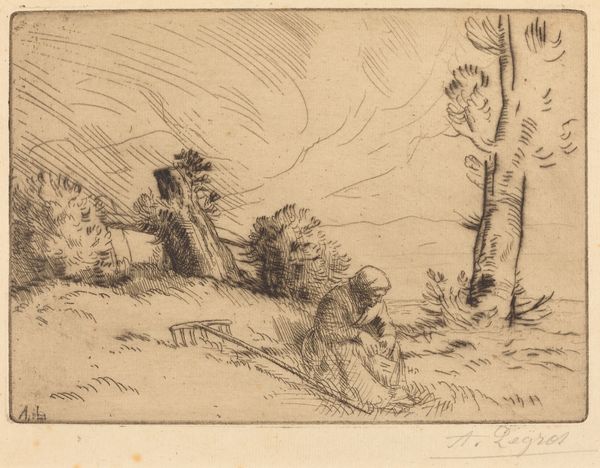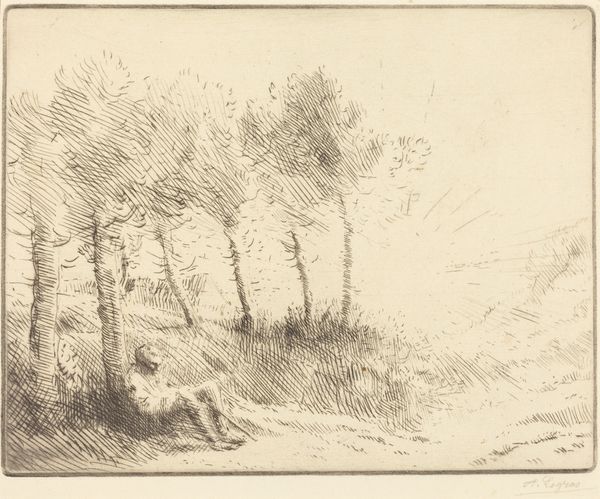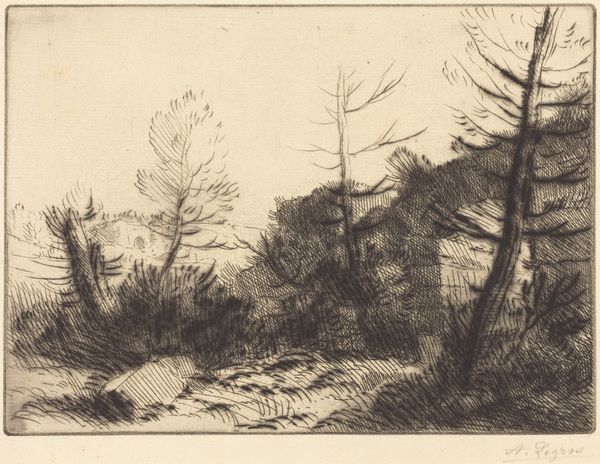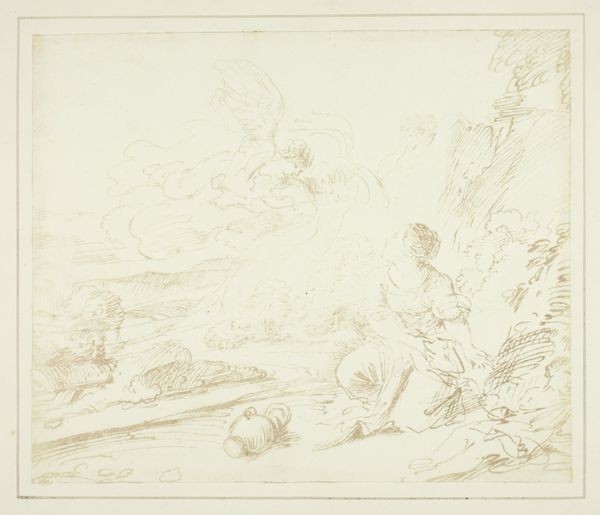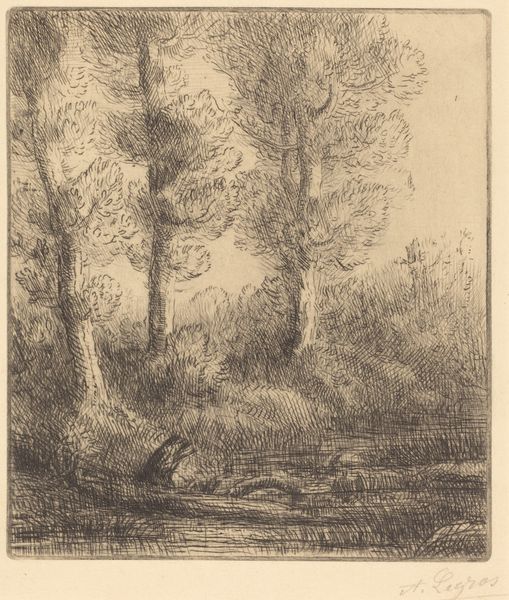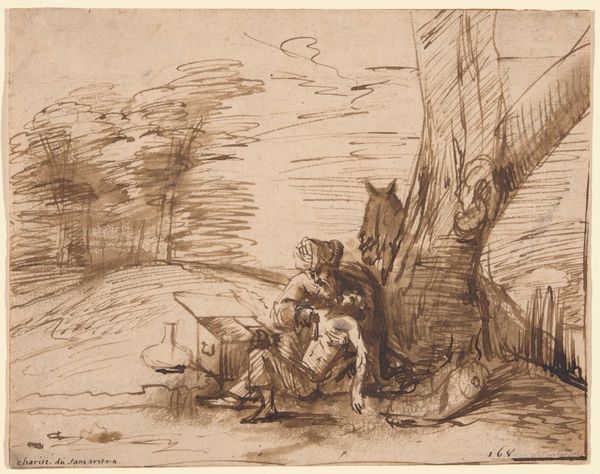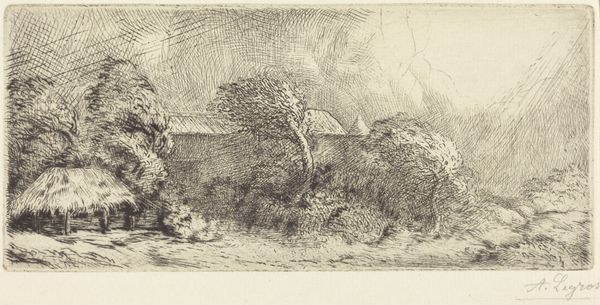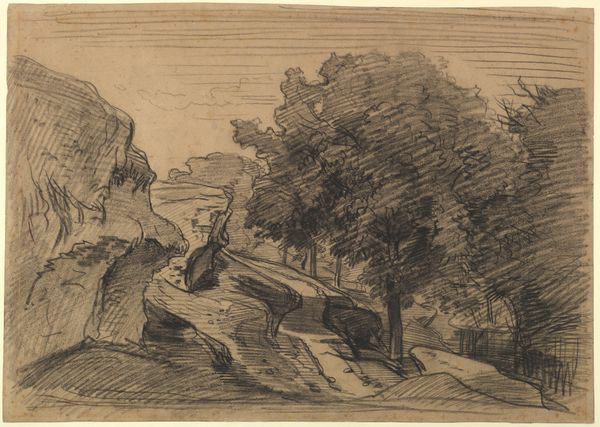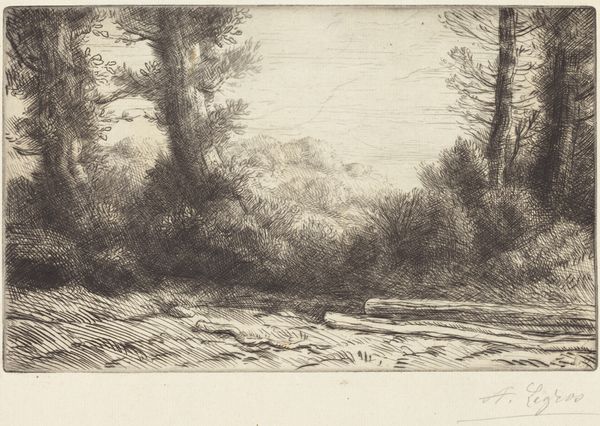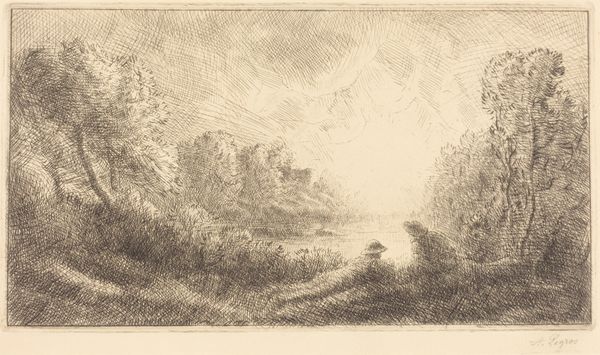
Edge of a Forest in Bourgogne (Un coin de foret en Bourgogne)
0:00
0:00
drawing, print, ink
#
drawing
#
ink drawing
# print
#
landscape
#
ink
Copyright: National Gallery of Art: CC0 1.0
Curator: This ink drawing, or rather, print, is titled "Edge of a Forest in Bourgogne," and it’s by Alphonse Legros. It immediately gives me a sense of foreboding; the scene is shrouded in a looming darkness. Editor: I see that darkness, but I’m struck by the incredible labor depicted here. Look at the figure struggling with what seems to be freshly cut timber and a primitive cart. You can almost feel the weight of the wood, the rough texture of the earth underfoot, the pull and strain involved. Curator: It's interesting you highlight the labor. Legros's own history—his artistic training began in workshops, after all—definitely lends a unique perspective here. How do you think this resonates with its display and reception now, placed in a fine art setting? Editor: I find it challenges the artificial hierarchies within the art world, the false divide between 'high art' and the skill-based crafts that make up everyday life. This is raw, visceral. The stark ink lines really amplify the physical demands depicted. Curator: And consider the social context! The image hints at a socio-economic divide, doesn’t it? The relationship between those who own the land, perhaps, and those who are inextricably bound to it through manual work. It implicitly questions what stories are told and by whom within artistic circles. Editor: Exactly. Look closely at those hatch marks building the atmospheric depth. Think of the etcher's own labor involved in the matrix of marks that render depth. You could spend a lot of time mapping the relationships between that labor, that landscape, that figure's task. Curator: True. Legros makes the materiality of his process quite visible, but this image—however evocative—was also intended to be reproduced and sold, widening the dissemination of artistic ideas. Does that dilute its inherent commentary? Editor: Not necessarily, but it does muddy the waters a little. The work exists within this nexus of labor, skill, marketplace demands. The material reality always carries a story, which Legros understood. Curator: Well, examining this image together really does allow us to peel back the layers and consider the intersecting dialogues of artistic production and cultural implications. Editor: Yes, by analyzing Legros' "Edge of a Forest in Bourgogne" with a closer look at production, perhaps we also highlight not just a landscape, but an environment forged from the hard work of those within it.
Comments
No comments
Be the first to comment and join the conversation on the ultimate creative platform.
